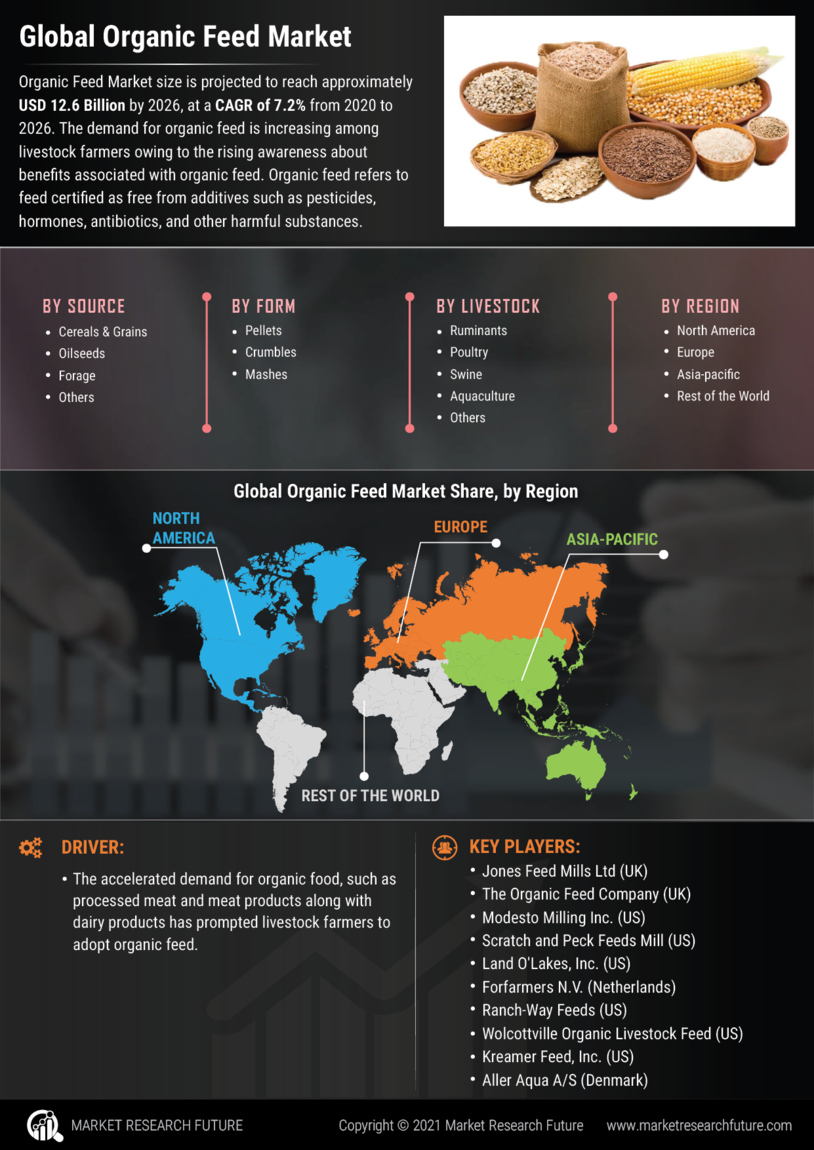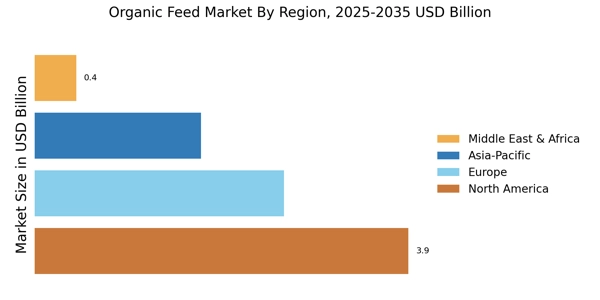Increased Awareness of Animal Welfare
The Organic Feed Market is increasingly influenced by heightened awareness of animal welfare among consumers and producers alike. There is a growing recognition that the quality of animal feed directly impacts the health and well-being of livestock. As consumers demand ethically sourced products, farmers are more inclined to adopt organic feed practices that align with these values. This shift is reflected in market data, which indicates that a significant portion of consumers is willing to pay a premium for products that ensure better animal welfare standards. Consequently, the organic feed market is likely to see sustained growth as it aligns with these ethical considerations.
Regulatory Support for Organic Farming
The Organic Feed Market benefits from a robust framework of regulatory support aimed at promoting organic farming practices. Governments in various regions are implementing policies that encourage the use of organic feed, which is seen as a vital component in achieving sustainable agricultural goals. For instance, subsidies and grants for organic farmers are becoming more common, facilitating the transition from conventional to organic farming. This regulatory environment not only supports farmers but also enhances consumer confidence in organic products. As a result, the organic feed market is likely to expand, driven by both policy incentives and consumer trust in certified organic products.
Rising Consumer Demand for Organic Products
The Organic Feed Market is experiencing a notable surge in consumer demand for organic products. This trend is largely driven by increasing awareness of health and environmental issues associated with conventional farming practices. Consumers are becoming more discerning, seeking products that are free from synthetic pesticides and fertilizers. According to recent data, the organic food sector has seen a growth rate of approximately 10% annually, which is expected to influence the organic feed segment significantly. As consumers prioritize sustainability and health, the demand for organic feed is likely to rise, compelling producers to adapt their offerings to meet these evolving preferences.
Expansion of Distribution Channels for Organic Feed
The Organic Feed Market is witnessing an expansion of distribution channels, which is facilitating greater access to organic feed products. Traditional retail outlets are increasingly complemented by online platforms, allowing farmers to source organic feed more conveniently. This trend is supported by the rise of e-commerce, which has transformed how agricultural products are marketed and sold. Data suggests that online sales of organic feed are growing at a rapid pace, providing farmers with more options and competitive pricing. As distribution channels continue to diversify, the organic feed market is expected to expand, reaching a broader audience and enhancing overall market dynamics.
Technological Innovations in Organic Feed Production
Technological advancements are playing a crucial role in the Organic Feed Market, enhancing production efficiency and product quality. Innovations such as precision agriculture, biotechnology, and advanced feed formulations are enabling producers to create more effective organic feed solutions. These technologies help in optimizing resource use, reducing waste, and improving the nutritional profile of organic feed. For example, the introduction of fermentation techniques has shown promise in enhancing the digestibility of organic feed ingredients. As these technologies continue to evolve, they are expected to drive growth in the organic feed market, making it more competitive and appealing to farmers.


















Leave a Comment